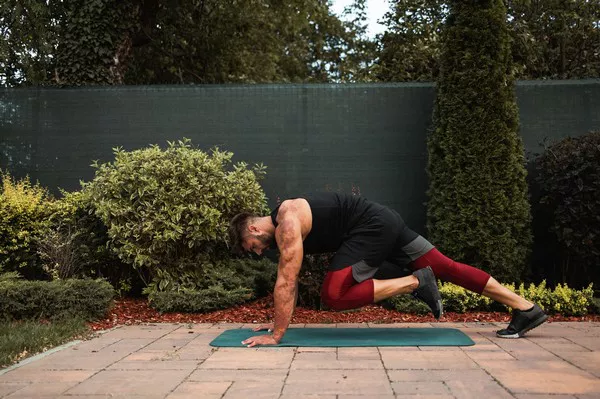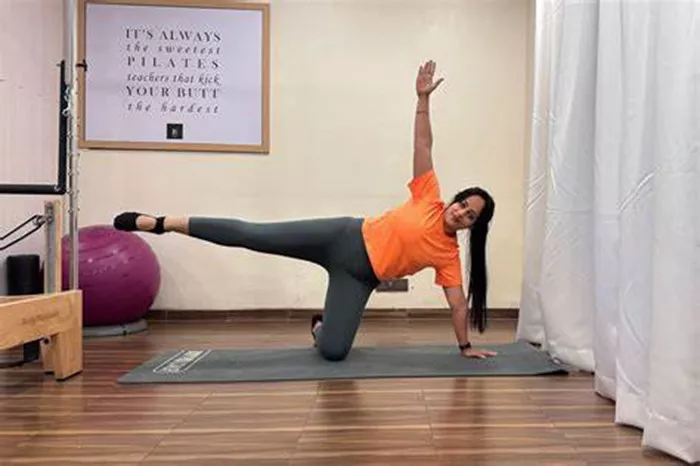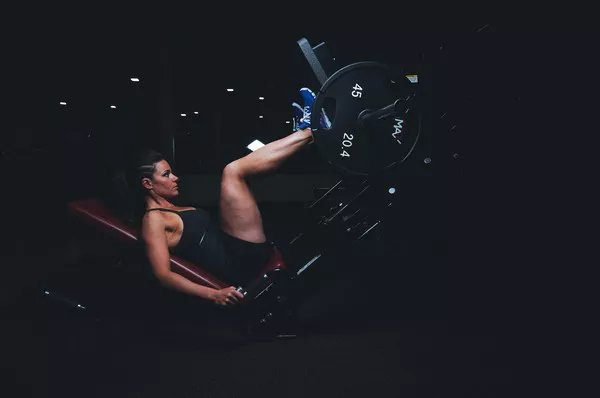The Copenhagen plank is a powerful and challenging variation of the traditional side plank. It specifically targets the adductor muscles, located in the inner thighs, which are often neglected in conventional strength training routines. Originating from exercises developed in Denmark for athletes, particularly soccer players, the Copenhagen plank has steadily gained popularity among physiotherapists, trainers, and fitness enthusiasts for its unique ability to build core and groin strength simultaneously.
Unlike the standard plank that focuses mostly on the abdominal area, the Copenhagen plank involves lifting the lower body while supporting the top leg on an elevated surface. This position puts considerable tension on the adductor muscles, as well as the obliques, hips, and stabilizing muscles throughout the torso. The result is a highly effective, full-body stabilization exercise that not only improves muscular endurance but also helps prevent injuries in sports and everyday activities.
Why Is It Gaining Attention in the Fitness World?
Over recent years, the fitness community has become more aware of the importance of training smaller, stabilizing muscles that contribute to injury prevention. The Copenhagen plank excels in this area. By working the adductors and the deeper layers of the core, this movement helps correct imbalances and enhances muscular coordination. As injuries related to weak groin and hip muscles become more common, especially in athletes, exercises like the Copenhagen plank have started to take center stage.
Another reason for its rising popularity is its scalability. It can be modified to suit different fitness levels, making it accessible to both beginners and professional athletes. Trainers appreciate that it doesn’t require fancy equipment—just a bench or a sturdy elevated surface. Its simplicity and efficiency make it a valuable addition to almost any training program, from rehab settings to elite performance enhancement.
What Muscles Does the Copenhagen Plank Target?
The Copenhagen plank primarily targets the adductor group of muscles, which includes the adductor brevis, adductor longus, adductor magnus, gracilis, and pectineus. These muscles are essential for stabilizing the pelvis, aiding in hip movement, and generating lateral force. Weakness in this area can lead to instability and increase the risk of groin strains and hip injuries.
In addition to the adductors, the exercise also engages the obliques, which are part of the core muscle group. The obliques work to stabilize the torso during the lift and maintain balance. Other supporting muscles include the gluteus medius and minimus, transverse abdominis, and quadratus lumborum. The result is a comprehensive engagement of the lower body and core muscles, providing both strength and functional stability.
How Do You Perform the Copenhagen Plank?
To perform the Copenhagen plank, lie on your side with a bench or box beside you. Place your top leg on the bench so that the ankle or knee rests on the edge. Support your upper body by placing your forearm on the ground directly below your shoulder. Now, lift your lower body off the ground, using your inner thigh and core to maintain a straight line from your head to your foot. The lower leg should hover below the elevated surface without touching the floor. Hold this position for a specific duration, then switch sides.
Maintaining proper form is critical to avoid straining the neck or lower back. Keep your hips elevated and aligned with your shoulders and knees. Do not let the lower back arch or sag. Breathe steadily throughout the movement. Beginners may start with the knee supported on the bench, while more advanced practitioners can place the ankle on the edge for a longer lever and increased difficulty.
What Are the Benefits of the Copenhagen Plank?
One of the greatest benefits of the Copenhagen plank is its role in injury prevention. Groin strains and hip injuries are prevalent among athletes in sports that involve running, kicking, or sudden changes in direction. By strengthening the adductors and surrounding stabilizers, this exercise helps reduce the likelihood of such injuries. It also improves the functional strength required for lateral movements, making it ideal for soccer, basketball, tennis, and similar sports.
The Copenhagen plank is also highly effective for core development. It challenges the deep stabilizing muscles of the abdomen, which are often overlooked in traditional abdominal exercises. The dynamic nature of the position forces the body to resist rotational and lateral forces, leading to improved balance, coordination, and posture. Additionally, it can enhance athletic performance by increasing lower-body power and reducing energy leaks during movement.
How Can It Be Modified for Different Skill Levels?
The Copenhagen plank is a demanding exercise, but it can be tailored to match various skill levels. For beginners, the most common modification is to rest the top leg’s knee on the bench instead of the ankle. This shortens the lever and reduces the load on the adductors. As strength improves, the individual can progress to supporting the ankle and eventually adding dynamic movements such as leg lifts or pulses.
Another variation involves bending the lower leg and resting it on the floor while still lifting the hips. This version helps build strength in the core and hips while minimizing strain on the inner thigh. Advanced athletes may increase the challenge by adding weights to the torso or performing slow, controlled reps with movement in the free leg. These progressions ensure that the Copenhagen plank remains effective and engaging across all stages of training.
When Should You Incorporate It into Your Routine?
The Copenhagen plank can be incorporated into various stages of a workout depending on the goal. As a warm-up exercise, it activates the adductors and primes the core for more intense activity. This is especially useful before sports games or lower-body strength training. When used as part of the main workout, it contributes to muscle hypertrophy and endurance. In rehabilitation programs, it can be introduced gradually to restore strength after a groin or hip injury.
Ideally, the exercise should be performed two to three times a week to see measurable improvements in strength and stability. It pairs well with movements like lunges, glute bridges, and side planks to form a balanced lower-body and core routine. Recovery time is also important, especially for those new to adductor training, as these muscles can become sore after the initial sessions.
What Are the Common Mistakes and How to Avoid Them?
Several common mistakes can limit the effectiveness of the Copenhagen plank or even lead to injury. One of the most frequent errors is poor body alignment. Dropping the hips or arching the back reduces muscle activation and places unnecessary strain on the spine. Always aim to keep the body in a straight line and engage the core throughout the movement.
Another mistake is holding the position too long without proper form. Quality is more important than duration. If you notice your form slipping, it’s better to reduce the time and increase it gradually as you gain strength. Also, avoid jerking motions or bouncing the free leg, as this can destabilize the posture. Focus on controlled movements and smooth transitions between reps and sides.
How Does It Compare to Traditional Planks?
While traditional planks primarily target the rectus abdominis and transverse abdominis muscles, the Copenhagen plank places a stronger emphasis on the obliques and adductors. This makes it more effective for improving lateral stability and pelvic alignment. It also introduces an element of instability that challenges the body to work harder to maintain balance.
Traditional planks are excellent for beginners or those focused on general core strength, but they often become too easy with time. The Copenhagen plank, due to its dynamic and asymmetrical nature, continues to be challenging even for advanced athletes. It offers a more comprehensive approach to core training and is particularly beneficial for sports-specific conditioning.
Who Can Benefit Most from the Copenhagen Plank?
Athletes involved in high-impact sports that require rapid direction changes or sustained lower-body effort stand to benefit greatly from the Copenhagen plank. This includes soccer players, runners, martial artists, hockey players, and dancers. It’s also an excellent choice for individuals recovering from groin or hip injuries, as long as it’s introduced gradually under professional guidance.
However, you don’t need to be an athlete to benefit. Office workers who sit for prolonged periods often develop hip imbalances and weak cores, which can lead to posture problems and chronic pain. Incorporating the Copenhagen plank into a general fitness routine can improve functional movement, core engagement, and overall body stability, making daily tasks easier and reducing the risk of falls or strains.
What Does the Research Say About Its Effectiveness?
Studies in sports science and rehabilitation have shown promising results for the Copenhagen plank in improving adductor strength and preventing groin injuries. A widely cited study conducted with soccer players demonstrated that athletes who included this exercise in their training experienced significantly fewer groin strains than those who did not. The researchers noted measurable gains in strength and muscle activation, supporting the use of this exercise in performance and injury-prevention programs.
Further research has highlighted its benefits in neuromuscular coordination. Electromyography (EMG) analysis indicates high activation levels in both the adductors and core muscles during the exercise. This validates the Copenhagen plank as an efficient way to target multiple muscle groups simultaneously. As evidence continues to accumulate, more physiotherapists and coaches are integrating it into structured training regimens.
What Should You Consider Before Trying It?
Before adding the Copenhagen plank to your routine, it’s important to assess your current fitness level and any pre-existing conditions. Those with a history of groin injuries, hip pain, or lower back issues should consult a healthcare professional or physical therapist to ensure the movement is safe. Proper form is key, and it may take time to develop the strength and coordination needed to perform the full version correctly.
Warming up the hips and core with dynamic stretches or light activation exercises can also help prepare the body. Listen to your body and avoid pushing through pain. If discomfort occurs in the hips or inner thighs, reduce the intensity or modify the position. Consistency and gradual progression are the best strategies for mastering this challenging yet rewarding movement.
Conclusion
The Copenhagen plank is more than just a variation of a core exercise. It is a dynamic, versatile movement that challenges the body in unique ways and offers benefits that go beyond appearance or isolated strength gains. From injury prevention to functional performance improvement, this plank variation earns its place in modern fitness and rehabilitation programs.
Whether you’re a competitive athlete or someone looking to improve daily movement and stability, the Copenhagen plank provides a powerful tool for strengthening the core and lower body. Its growing reputation is backed by science and real-world results. With proper technique and consistency, it can be a game-changer in building a stronger, more resilient body.
Related Topics

































